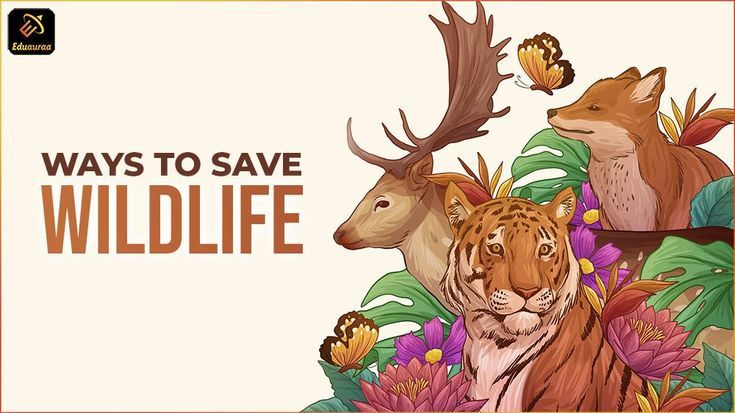The Wonder Of Animals: Their Behaviors, Habitats, And Conservation

Table of Contents
Fascinating Animal Behaviors
Animals exhibit a stunning range of behaviors, shaped by evolution and their environment. Understanding these behaviors provides insights into their social structures, survival strategies, and the intricate workings of the natural world.
Communication and Social Structures
Animals communicate in diverse and remarkable ways. Effective communication is essential for survival, reproduction, and maintaining social order.
- Vocalizations: Birdsong, whale calls, and the roar of a lion are all examples of vocal communication, used for attracting mates, warning of danger, or establishing territory.
- Body Language: Posture, facial expressions, and gestures play a crucial role in communication. A dog's wagging tail, a cat's arched back, or a primate's grooming rituals all convey specific messages.
- Pheromones: Chemical signals, or pheromones, are used by many animals for communication, particularly for attracting mates or marking territory. Ants, for example, rely heavily on pheromone trails.
Animal societies vary greatly in complexity. Some animals are solitary, while others live in complex social structures.
- Solitary Animals: Many cats, such as leopards and tigers, are primarily solitary animals, except during mating season.
- Pair-Bonding: Many bird species form pair bonds, cooperating in raising their young.
- Complex Societies: Animals like honeybees, with their intricate waggle dance communication system, and wolves, with their hierarchical pack behavior, showcase the complexity of animal societies. Primate behavior, particularly in species like chimpanzees and bonobos, also demonstrates sophisticated social structures and communication.
Predation and Defense Mechanisms
The predator-prey relationship is a fundamental aspect of many ecosystems. Animals have evolved a wide array of hunting strategies and defensive mechanisms to survive.
- Hunting Strategies: Cheetahs employ speed and agility for pursuit hunting, while ambush predators like lions rely on stealth and surprise.
- Defense Mechanisms: Camouflage, like that of a chameleon, allows animals to blend seamlessly into their surroundings. Mimicry, where one species evolves to resemble another, can also deter predators. Poison dart frogs exemplify the use of toxins as a defense.
Understanding these predator-prey relationships and the associated hunting strategies and defense mechanisms is vital for maintaining ecological balance.
Migration and Navigation
The remarkable journeys undertaken by migratory animals are a testament to their navigational prowess and biological adaptations.
- Monarch Butterfly Migration: Monarch butterflies undertake an incredible multi-generational migration, traveling thousands of miles between Canada and Mexico.
- Salmon Migration: Salmon return to their natal streams to spawn, guided by an internal compass and olfactory cues.
- Bird Navigation: Birds utilize various cues for navigation, including the earth's magnetic field, celestial cues, and landmarks. The homing instinct in birds is a fascinating area of ongoing research.
Diverse Animal Habitats
Animals have adapted to an astonishing array of habitats, each presenting unique challenges and opportunities.
Terrestrial Ecosystems
Terrestrial ecosystems are incredibly diverse, encompassing forests, grasslands, deserts, and mountains.
- Forests: The Amazon rainforest supports an unparalleled biodiversity, with a vast array of animal species.
- Grasslands: The African savanna is home to iconic animals such as lions, elephants, and zebras.
- Deserts: Desert animals, such as reptiles and rodents, have evolved remarkable adaptations to survive in harsh conditions.
- Mountains: Mountain goats and yaks are well-adapted to life in high-altitude environments.
Aquatic Ecosystems
Aquatic habitats range from the vast oceans and vibrant coral reefs to the calmer waters of rivers and lakes.
- Oceans: Ocean mammals, such as whales and dolphins, are highly adapted to their marine environment.
- Coral Reefs: Coral reefs teem with colorful fish and invertebrates, creating some of the most biodiverse ecosystems on Earth.
- Rivers and Lakes: River otters and various species of freshwater fish thrive in river and lake environments.
Adaptation to Specific Environments
Animals exhibit incredible adaptations to thrive in their specific habitats. These adaptations can be physical or behavioral.
- Arctic Animals: Thick fur provides insulation for animals in arctic regions.
- Giraffes: Long necks allow giraffes to reach high foliage.
- Ducks: Webbed feet aid in swimming and propulsion in aquatic environments.
The Importance of Animal Conservation
The wonder of animals is threatened by human activities. Conservation efforts are essential to protect biodiversity and maintain ecological balance.
Threats to Animal Populations
Several factors pose significant threats to animal populations.
- Habitat Loss: Deforestation, urbanization, and agriculture lead to habitat fragmentation and loss, pushing many species towards extinction.
- Climate Change: Changes in temperature, rainfall patterns, and sea levels are disrupting ecosystems and impacting animal populations. The impact of climate change on animals is a growing concern.
- Pollution: Pollution from various sources contaminates habitats and harms wildlife.
- Poaching: Illegal hunting and wildlife trade are major threats to many endangered species.
Conservation Efforts
Various conservation strategies are employed to protect animals and their habitats.
- Protected Areas: National parks and wildlife reserves safeguard crucial habitats.
- Breeding Programs: Captive breeding programs help increase populations of endangered species.
- Anti-Poaching Initiatives: Combating poaching and illegal wildlife trade is critical for species survival.
The Role of Individuals in Conservation
Individuals can play a vital role in protecting animals.
- Sustainable Living: Adopting sustainable practices reduces our environmental footprint.
- Supporting Conservation Organizations: Donating to and volunteering with conservation organizations makes a tangible difference.
- Responsible Tourism: Choosing eco-friendly tourism options minimizes negative impact on wildlife and habitats.
- Wildlife Advocacy: Advocating for stronger environmental policies and legislation protects animals and their habitats.
Conclusion
The wonder of animals lies in their incredible diversity of behaviors, the remarkable adaptations they exhibit across a vast range of habitats, and the intricate relationships they form within their ecosystems. However, many animal populations face unprecedented threats due to human activities. Discovering the wonder of animals should inspire us to actively participate in conservation initiatives. Learn more about your local wildlife, support conservation organizations, and make eco-conscious choices. Let's protect the amazing diversity of the animal kingdom for generations to come! Discover the wonder of animals and become a champion for their survival.

Featured Posts
-
 Doom The Dark Age Spoilers Released Ahead Of Schedule
May 13, 2025
Doom The Dark Age Spoilers Released Ahead Of Schedule
May 13, 2025 -
 Vittoria Ceretti And Leonardo Di Caprios Low Key Met Gala Debut
May 13, 2025
Vittoria Ceretti And Leonardo Di Caprios Low Key Met Gala Debut
May 13, 2025 -
 Olympus Has Fallen A Deep Dive Into The Action Thriller
May 13, 2025
Olympus Has Fallen A Deep Dive Into The Action Thriller
May 13, 2025 -
 The Good Fight Season 2 Episode 18 Elsbeths Showdown With Judge Crawford
May 13, 2025
The Good Fight Season 2 Episode 18 Elsbeths Showdown With Judge Crawford
May 13, 2025 -
 Leonardo Di Caprio 30 Eve Bucsut Intett A Heroinnak
May 13, 2025
Leonardo Di Caprio 30 Eve Bucsut Intett A Heroinnak
May 13, 2025
